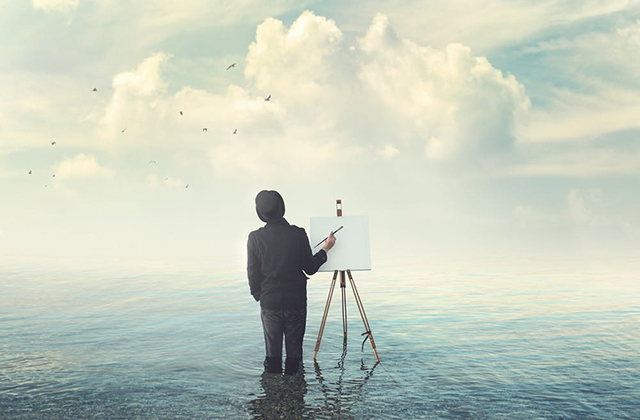I recently had to turn out a handful of storyboards and previs, so engaged in a bit of inquiry into the available packages –
Storyboards are often referred to as ‘Previsualization’ or ‘previs’ and could be any method which tries to envision scenes in the movie well before filming starts. Storyboard artist are the basis of any good production.
The benefit of previsualization is that it makes it possible for directors to realize different staging and art direction solutions while not having to incur the expense of actual production.
Storyboards may incorporate music, sound files and dialogue to thoroughly previs the feel of edited sequences, and are often employed for elaborate or tricky scenes that involve stunts and special effects.
My investigation revealed that Previs programs are roughly split between 3 areas:
2D, 3D and character/environment style and design.
The 2D applications can be considered like a digital model of conventional storyboarding -they don’t offer you camera passes or character movement inside the time line.
Every one of the 3D options have the 2D classic storyboard option but will also facilitate adjustment of characters in time and space: camera techniques can be created and altered.
Just a few of the 3D applications are made to perform in real time (pretty much) to make sure that a director/operator would be able to make modifications on set quickly with a small amount of rendering hold-up. These packages produce characters and environments that tend to lack complex detail and textures, however this is dramatically developing.
The last group is committed to environment and character design and style. Irrespective of their capability to render time-line animation and camera steps it’s not likely these particular programs could be put to use for on-set storyboard previs due to their render engines being designed for high definition production, and therefore long render times, having said that they can be incredibly helpful for complete detail character development, costumes, and environments as a result of these high quality renders.
I’m going to make an effort to sort out a number of of the most sought after systems on the market at the time of publishing.
Storyboard Quick
Storyboard Quick can be viewed as a standard storyboard software program, given it doesn’t make full use of 3d models. For this reason it’s straightforward to learn in addition the interface is not difficult. It is easy to bring in your own location photos, which is likely to be better than the rather ‘childlike’ clip art supplied.
Google SketchUp
Google SketchUp does not have timeline animation though the pro version does incorporate dynamic elements or somewhat limited animation within a scene, nonetheless it is really an remarkable piece of free computer software which has a significant service community and free models. It’s great fun, very interesting and the user interface is pretty easy to negotiate.
Toon Boom Storyboard Pro
Story Board Pro from Toon Boom is a really different program from the other 2D storyboard software indexed in this doc. Rather than making use of clip art plus imported textures Storyboard Pro can be described as an impressive illustrating application, preferably suited to using a pen tablet program -so if you can’t draw it might be advisable to avoid. If you’re able to draw then the program is exceptional, providing very quick paint and brush choices.
Storyboard Artist
I do believe the brand of this program is a little inaccurate because it’s a lot more than a two dimensional standard storyboard interface. This software allows 3D animatics and verbal sync animation and appears to have top notch three-dimensional clip art and models already built in.
Frameforge previs studio
FrameForge previz studio has fairly quickly come to be the main industry standard, on-set, software tool, for directors to shape 3D storyboards in (pretty much) real-time it can produce extensive timeline animation and mix an array of camera moves.
E frontier poser
Poser is a really special package which allows easy and quick character creation employing a vast number of 3d themes and open source contributions. It helps a creator to easily integrate 3 dimensional characters into any form of animation, animatic or still frame.
Vue
Vue is definitely a unique niche software application. It employs templates to produce environments which can be used for full-res matte paintings. It’s been recently used on Avatar and Indiana Jones 4 to create jungle landscapes.
Hitchcock Storyboard Composer for Iphone/Ipod touch platform
Just creeping in around the end of my previs research is Cinemeks Hitchcock storyboard composer for iphone/Ipod touch (needs camera).
You simply collect scene photos on the camera and use the program to control the framing, flow and timing of the shots within your storyboard. Despite the small size of the phone interface the reviews seem to have been favorable, however, if I was writing checks for actors to help me with a photographic storyboard I would probably employ a more effective stills camera which would enable depth of field and lighting variety. Having said that, I’m sure a lot of people will find it a particularly useful tool.
The Previsualization Society
And finally it is worthwhile finding out about the recently formed Previsualization Society for even more in-depth info: They endorse the use of previs in multiple market sectors around the world by endorsing effective strategies and a knowledge of the features of previsualization as a collaborative method and communication route. More information about creating a storyboard our your paper try to look for a storyboard artist.













